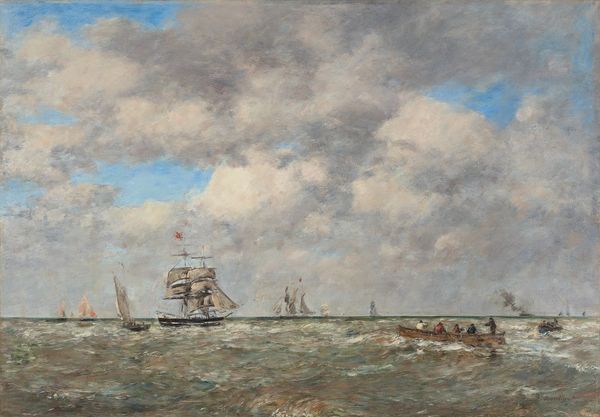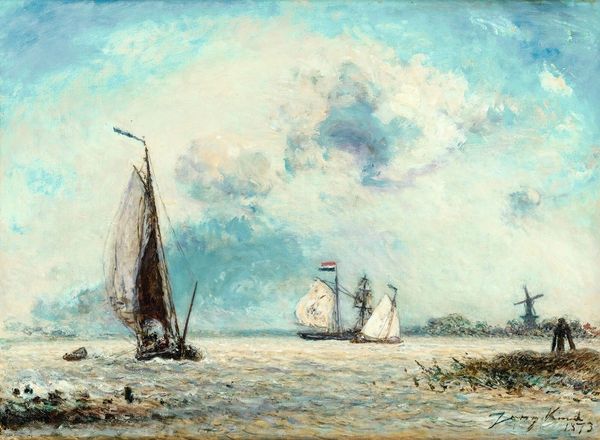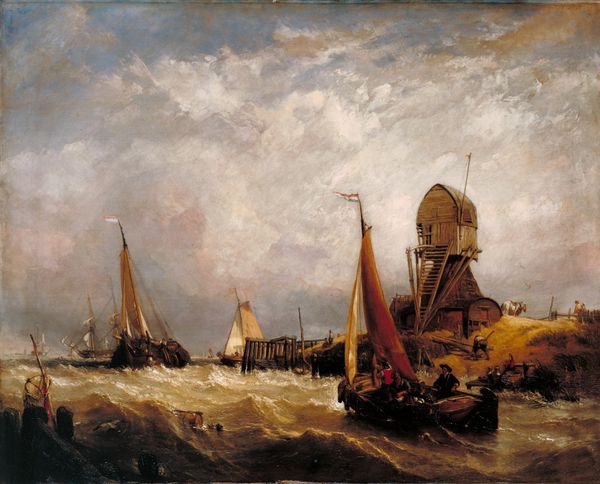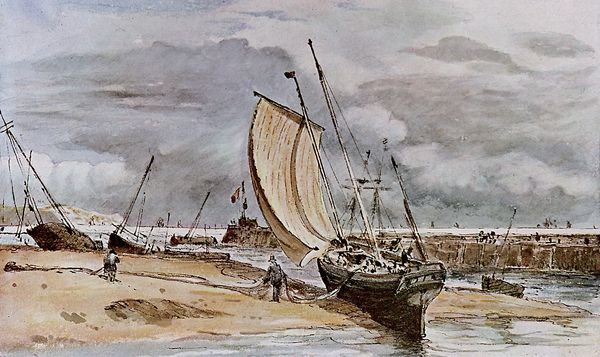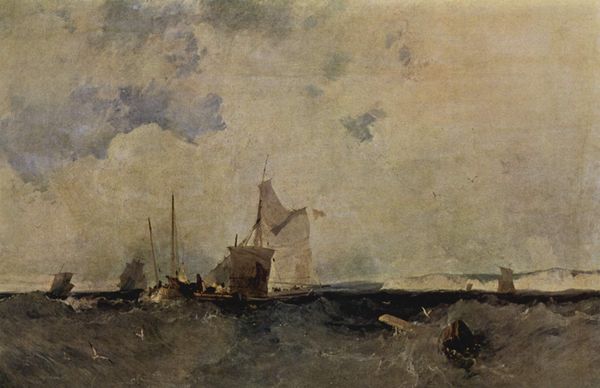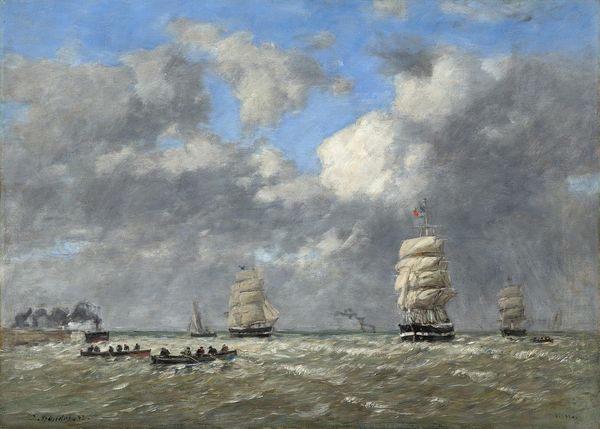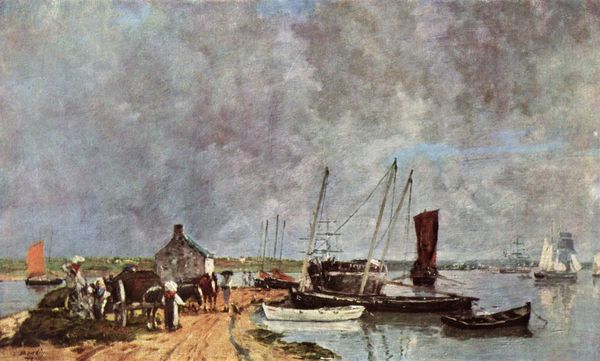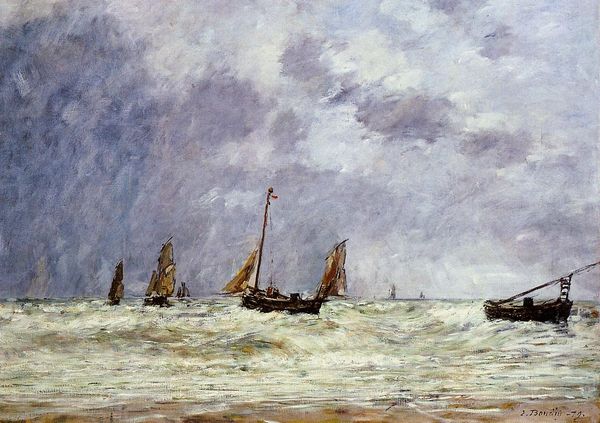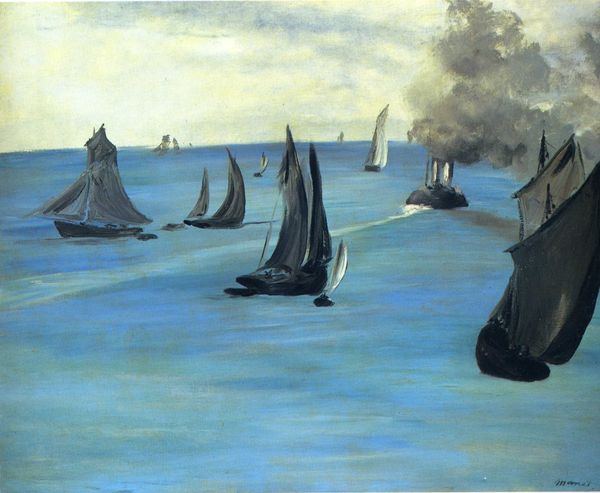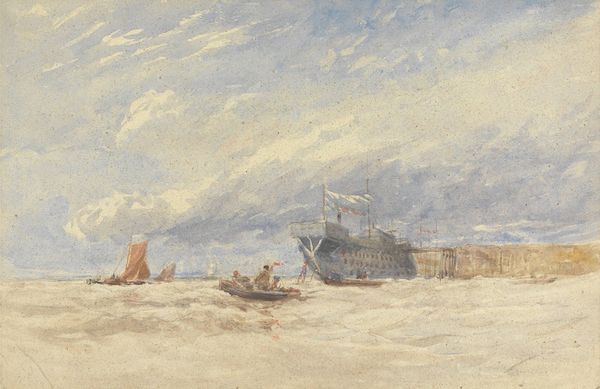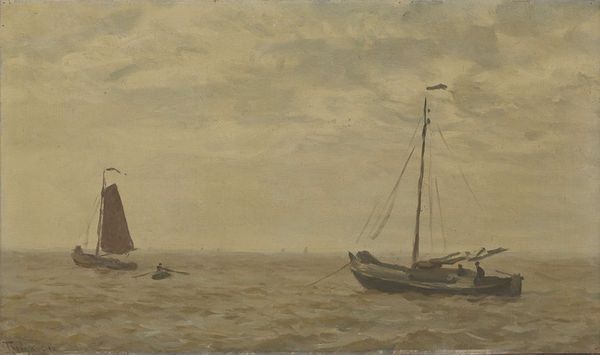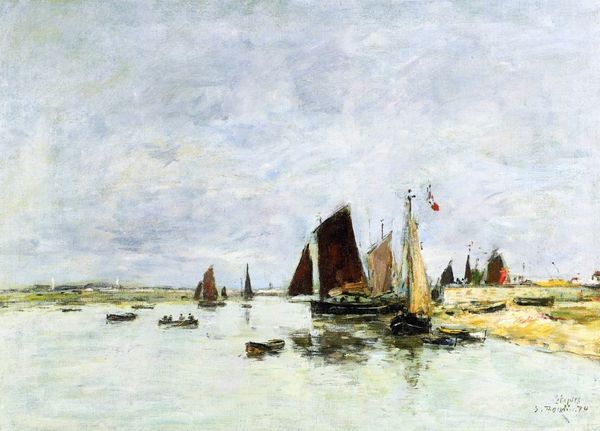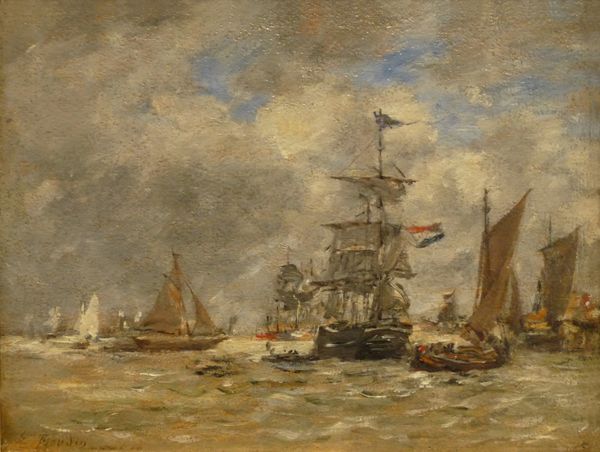
painting, plein-air, oil-paint, impasto
#
painting
#
impressionism
#
plein-air
#
oil-paint
#
landscape
#
impressionist landscape
#
oil painting
#
impasto
#
water
Copyright: Public domain
This is Claude Monet’s “The Seine Estuary at Honfleur,” made with oil paint on canvas. Look closely, and you can see how Monet built up the image with layers of brushstrokes. It’s easy to take this for granted, but think about what that means: the painting isn’t just *of* a scene, it’s also *about* the act of seeing, the way light hits the eye. The painting is also about the slow application of paint onto a surface; in this case, a commercially produced canvas, likely made in a factory and stretched over a wooden frame. The effect is to bring our attention to the labor, the slow accumulation of visual information, that goes into making a picture. Monet’s painting can be understood in light of the growing industrialization in the 19th century. He wasn't using artisanal colors ground by hand; these were ready-made, available in tubes. The painting is thus a meditation on what it meant to be an artist in an age of mass production.
Comments
No comments
Be the first to comment and join the conversation on the ultimate creative platform.
